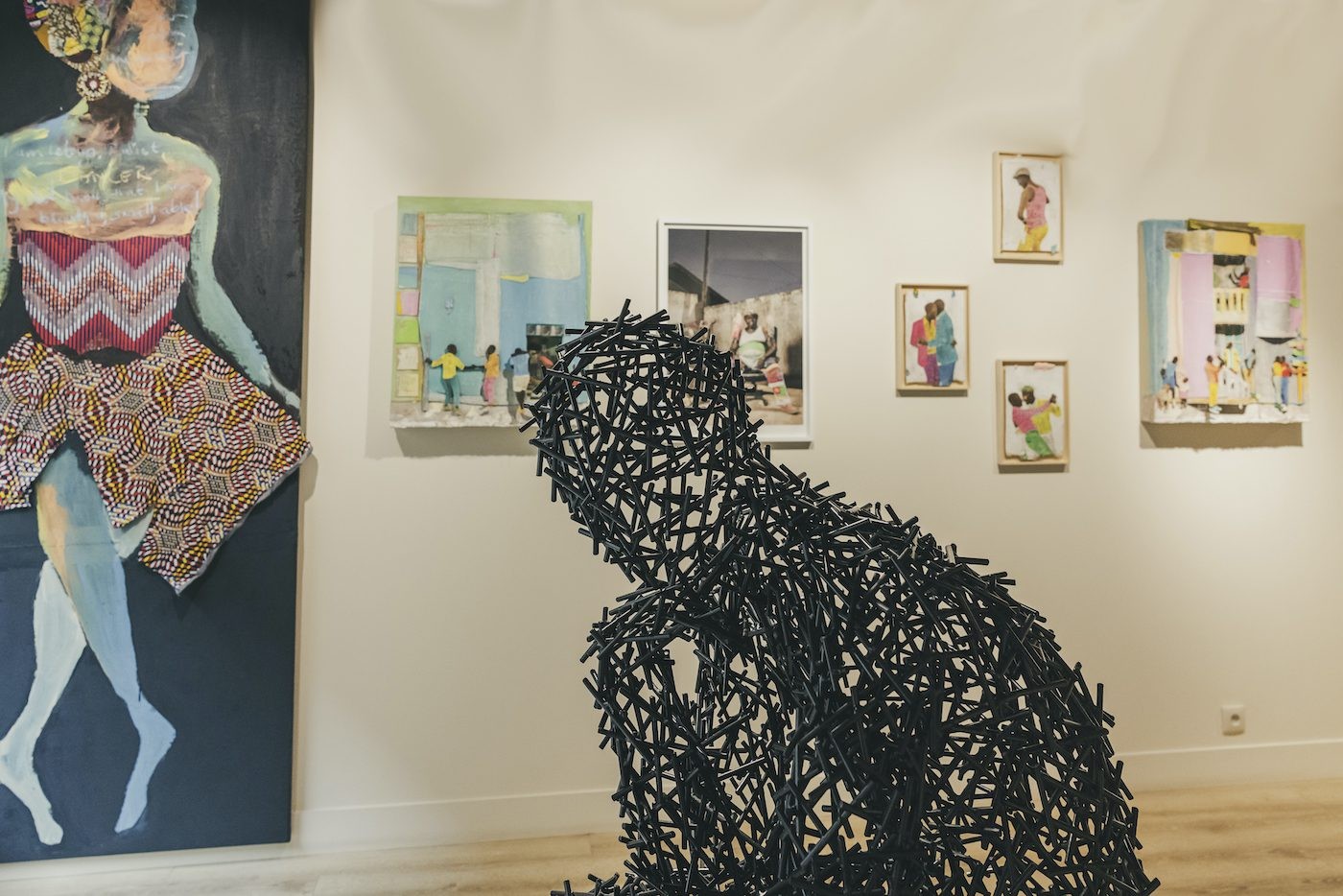Mo Laudi’s Take on Pan-Africanism
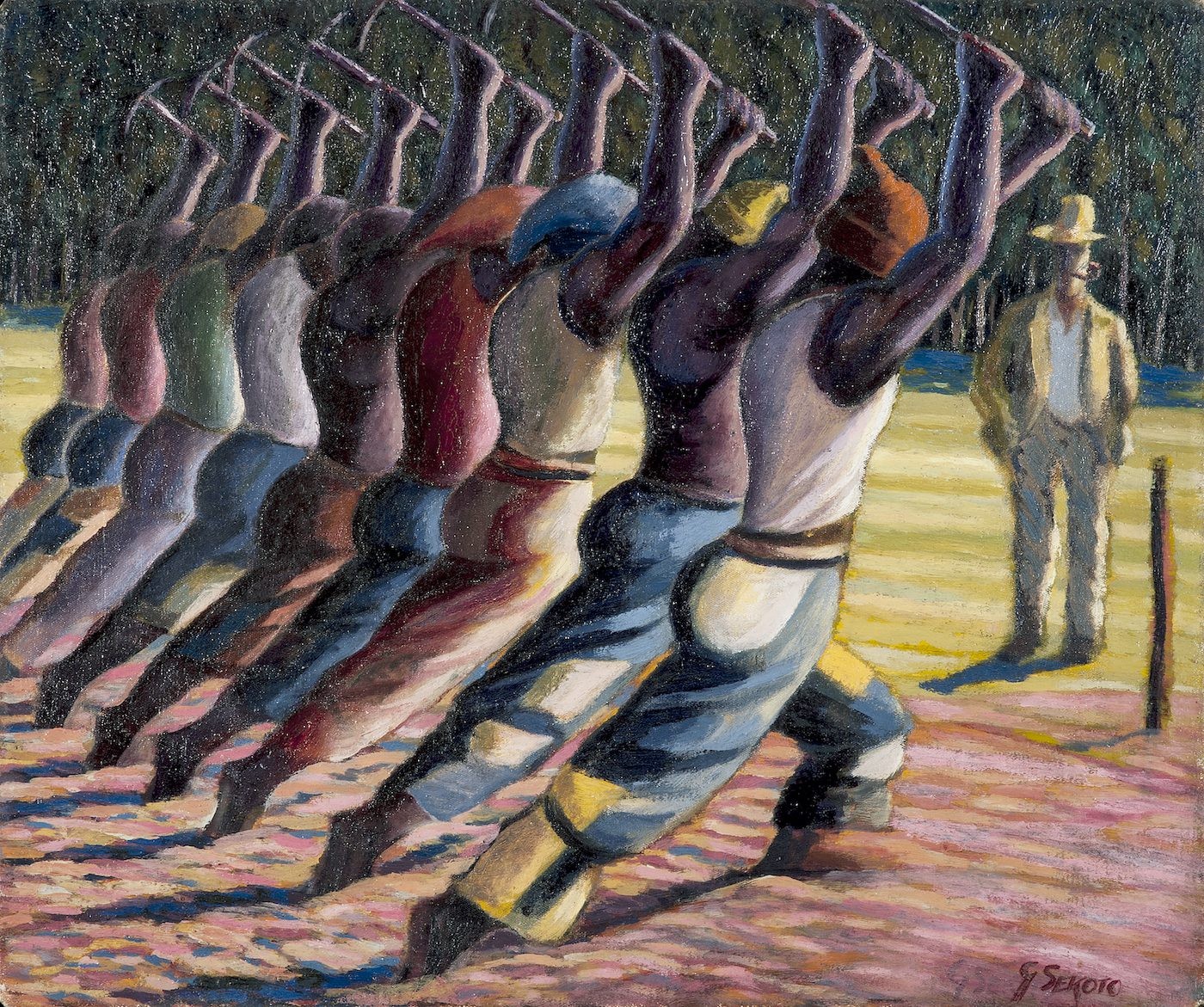
16 September 2022
Magazine C& Magazine
Words Tobi Onabolu
6 min read
The exhibition Globalisto: A Philosophy in Flux at MAMC+ shares observations on translocality and cultural hybridity.
“In precolonial African systems of thought, culture was not primarily about identity, heritage, [or] custom. “Instead, it was defined as the never-ending weaving of relations and correspondences between beings and things, liberating, if you want, the power of germination.” – Achille Mbembe[1]
“Ideas of locality, place, and community are miserably innocent of the realities of movement – of the transnational and transcultural. But is there a real contradiction here? Is locality a misunderstanding because there has always been contact?”
“Cultural centers, discrete regions and territories, do not exist prior to contacts, but are sustained through them, appropriating and disciplining the restless movement of people and things.” – Jonathan Friedman [2]
While the temporal discourse on Pan-Africanism simultaneously unearths and projects its trajectory, taking us further into history and imagining far into the future, obscure confines continue to limit the spatial dimensions of its impact. How can we continue to rebalance the inequitable power structures that prioritize certain epistemologies? How can we move past notions of the African continent as a place of recent discovery and bring attention to the never-ending exchanges that have always occurred between humans, through routes, winds, and waves?
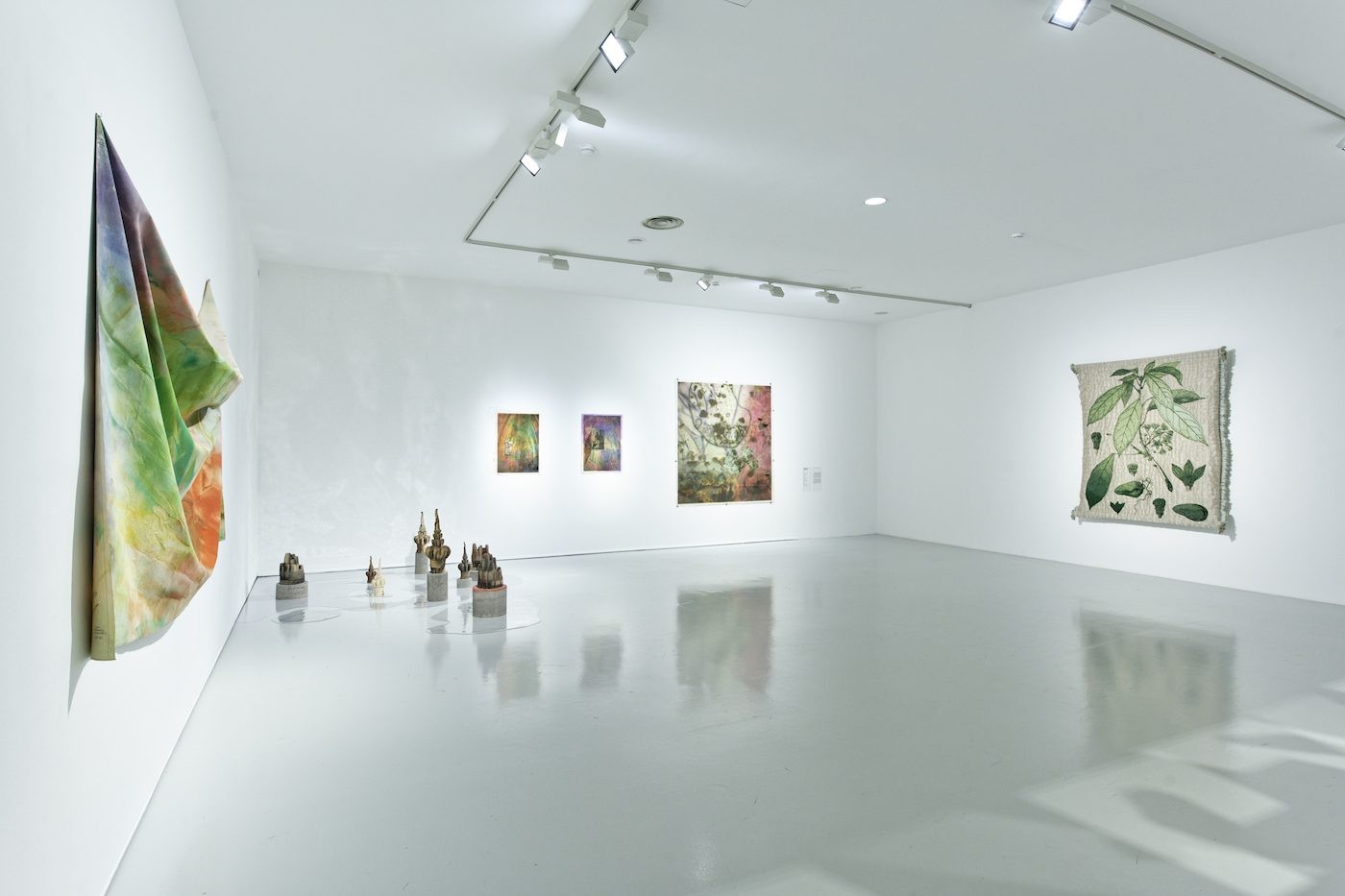
<figcaption> View of the exhibition Globalisto. A Philosophy in Flux at the Musée d’art moderne et contemporain de Saint-Étienne Métropole, from June 25th to October 16th, 2022. Crédit photo : C. Cauvet / MAMC+
In his first museum exhibition, Globalisto: A Philosophy in Flux, the curator, artist and DJ Mo Laudi renders essentialism obsolete. He invites us to engage with the concept of fluidity, considering the power of cultural convergence within the walls of the Museum of Modern and Contemporary Art in Saint-Etienne Métropole (MAMC+).
Where eurocentric modalities suffocate large portions of the contemporary African art ecology, as content seems to supersede form and structure, Mo Laudi uses Pan-Africanism as a way to see the world, as a means to an alternative future rather than an end itself.

<figcaption> Gerard Sekoto, Song of the Pick, 1947, huile sur carton, Courtesy South 32 Collection, dépôt à Javett Arts Centre, Pretoria © ADAGP, Paris 2022
Featuring works by celebrated artists heralding from the breadth of Africa and its Diaspora, the exhibition opens powerfully through archival documentation, literature, and music. Letters and writing from South African artist Gerard Sekoto during a residency right before his death are on display, including his certificate seeking refugee status in France. They sit alongside publications such as The Drum and Afrikada, books by Chinua Achebe, Amal Al-Haag, Frantz Fanon, bell hooks, W.E.B. Du Bois, Christine Eyene, and James Baldwin. Spread across five rooms, the exhibition features a plethora of media, including installation, painting, sound, sculpture, and video work. Mo Laudi considers the role protest music has played in South African liberation movements – specifically songs from ANC training camps in countries such as Tanzania, Zambia, and Mozambique – as a point of departure for exploring cultural interconnectedness and borderlessness.
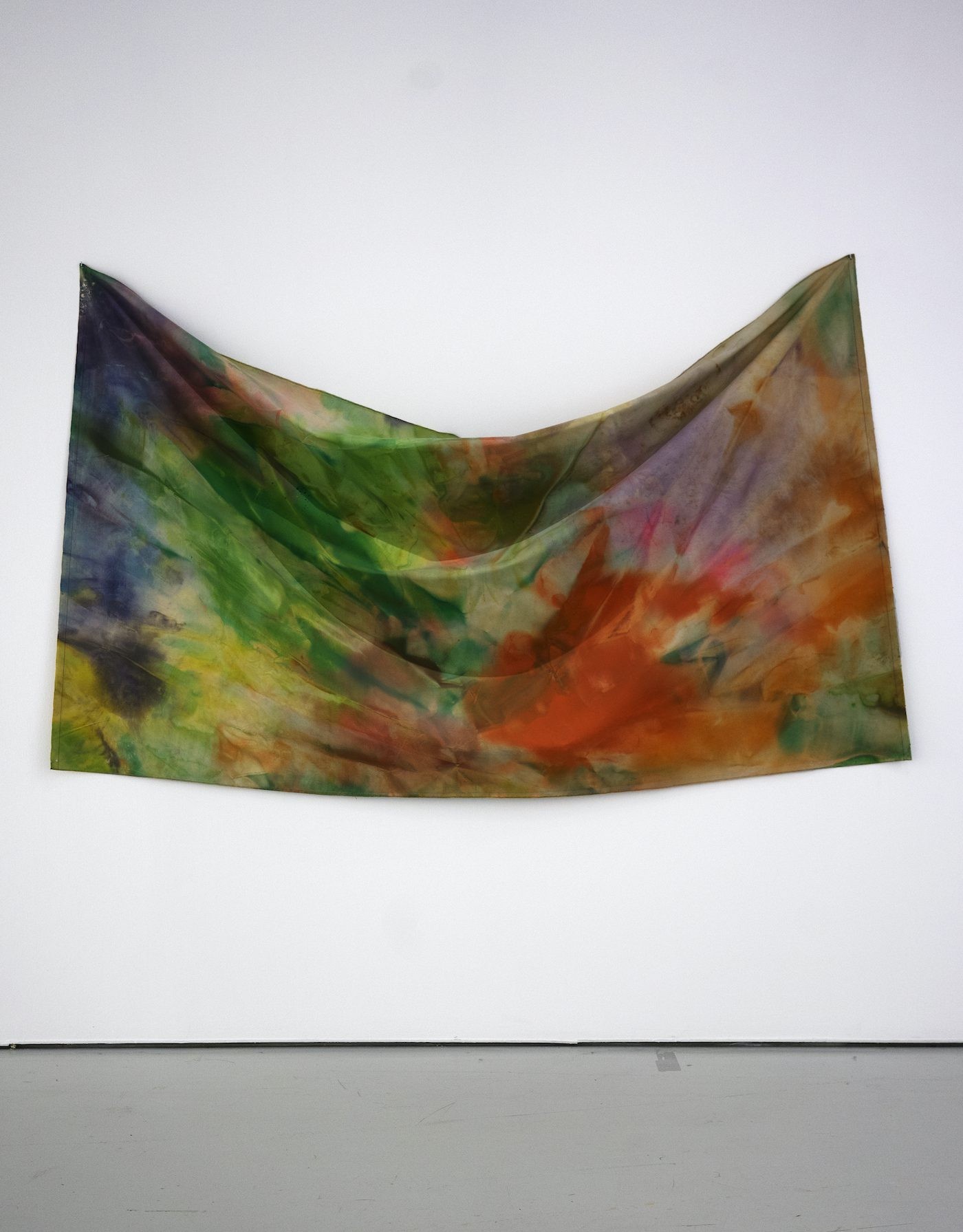
<figcaption> Sam Gilliam, Cape II, 1970, huile sur toile. Collection MAMC+, achat 1971. Photo : M. Applagnat / MAMC+ © ADAGP, Paris 2022
Unframed and hung on wall hooks in sculptural fashion, Cape II (1970), an oil-on-canvas piece by Sam Gilliam, speaks directly to these translocalities. In the late artist’s abstract expressionist style, the work nods to Black liberation movements of the twentieth century, and the improvisational nature of jazz. It was a radical approach for an African American artist of the period, given the supposed irrelevance of abstraction for Black American communities then. The piece has a galvanising activist quality that extends beyond its immediate locale. Cape II was acquired by MAMC+ in 1971, one year after its completion.
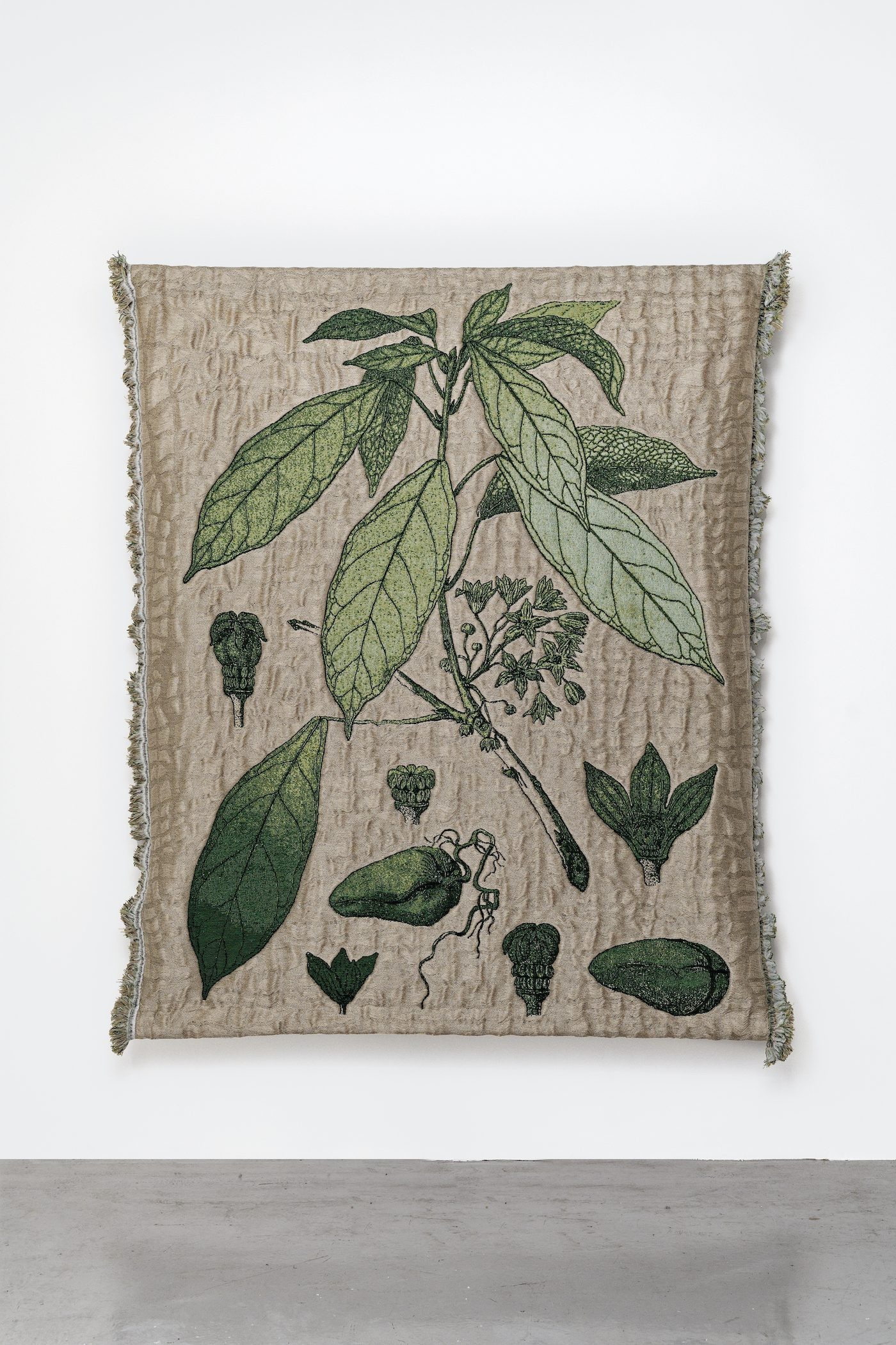
<figcaption> Otobong Nkanga, Histoires de noix de Cola – Démembrées, 2016, textile tissé / filé, polyester, coton organique, lin, acrylique. Courtesy Otobong Nkanga & Galerie In Situ-fabienne leclerc, Grand Paris. Photo : Aurélien Mole
Antwerp-based Nigerian artist Otobong Nkanga augments the discourse on Black liberation through materiality and commodification. Kolanut-Tales, Dismembered (2016) invites refelections on the importance of the renowned nut in West African customs and spiritual practices, as a life-giving source through its high caffeine content. Nkanga brings the food item into a global conversation, noting how it was used in the production of the popular soft drink Coca Colauntil 2016. Considerations of resource exploitation emerge, exploring the tension between the global and the local, prompting the pertinent (and perhaps rhetorical) question: how can customs and resources be shared equitably in a capitalist world order?
Social anthropologist James Clifford’s observations on “museums as products of capitalist civilization with their objectification and commodification” might be aptly applied. He questions how the museum might be thought of as a zone where hybrid objects can be observed and engaged with, and comments on the “lack of deeper ethnographic investigation into how these zones and objects figure in people’s lives.” [3]

<figcaption> Samson Kambalu, A Game of War: Kambalu v Sanguinetti Trial at Ostend, 2021, installation vidéo, 2h10, vue de l’installation au Modern Art Oxford, 2021. Courtesy galerie Kate MacGarry. Photo : Mark Blower
Despite the impressive array of exhibiting artists and works, the show still exists within the confines of western art modalities. While subject and content may differentiate themselves from the museum’s usual programming, the exhibition format ultimately places a limit on the impact of the philosophy. As such reigniting the continuous debate of how to decentralize the museum as an axis point of pedagogies, cultural production, consumption, and entertainment, and thus reviving African framings of culture as something that people belong to rather than own.
Yet with presentations from Achille Mbembe, Elvan Zabunya, Christine Eyene, and Pascale Obolo due to feature as part of the exhibition programme in October, there can still be great anticipation for how critical perspectives may converge around such a compelling theme.
Find more installation viewshere. Tobi Onabolu is an award-winning Filmmaker, Poet, Creative Director, and Cultural Strategist focused on pan-Africanism through storytelling, healing, collaboration, and critical thought. [1]Planetary Consciousness and Possible Future of Culture: Achille Mbembe, 25 Years 25 Hours Festival. Prince Claus, 2021https://www.youtube.com/watch?v=8fI3-6fjkqc&ab_channel=PrinceClausFund.[2] Jonathan Friedman, “Review: Routing Roots and Rooting Routes: A Cosmopolitan Paradox,” Current Anthropology, Vol. 39, No. 5 (December 1998).[3] Ibid.
Read more from
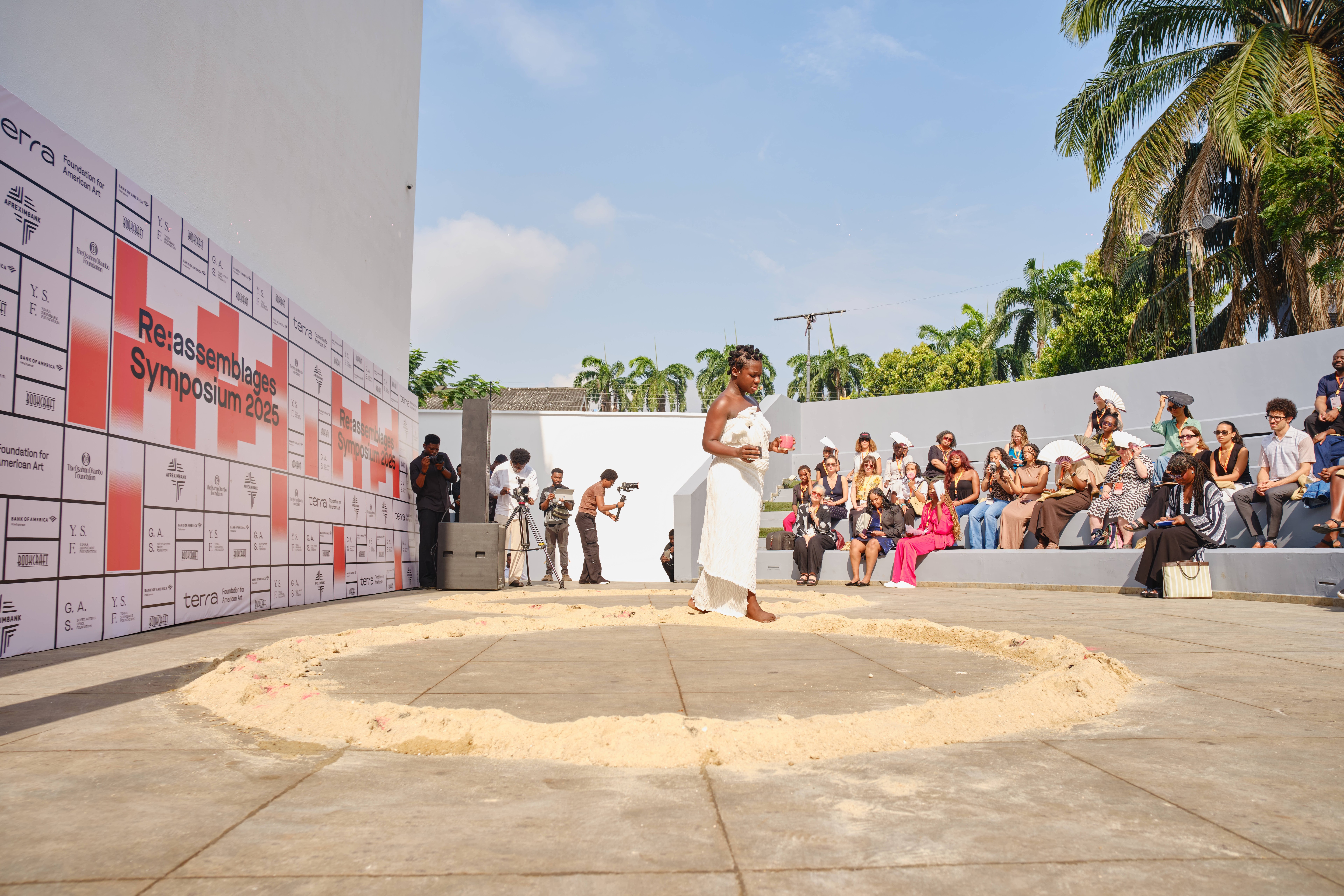
The Re:assemblages Symposium: How Might We Gather Differently?

On Exile, Amulets and Circadian Rhythms: Practising Data Healing across Timezones
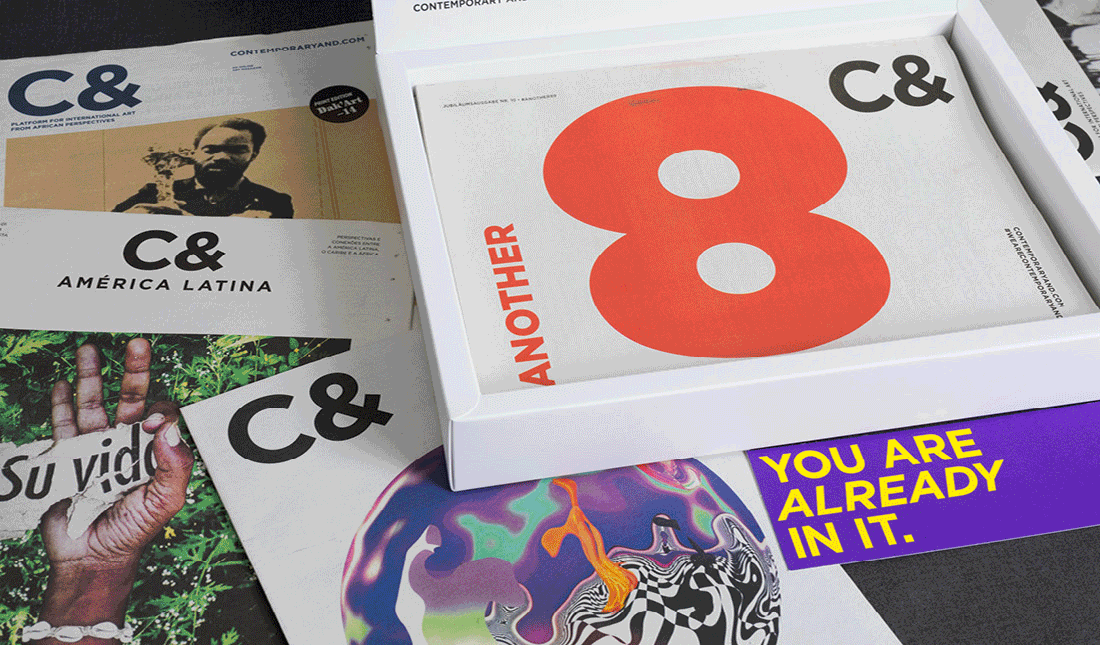
Bring Home your C& Collectors Box!
Read more from
